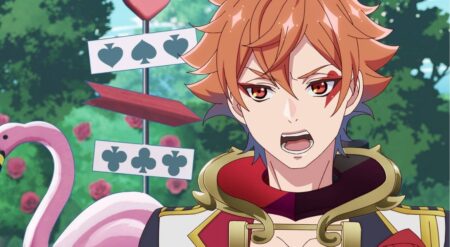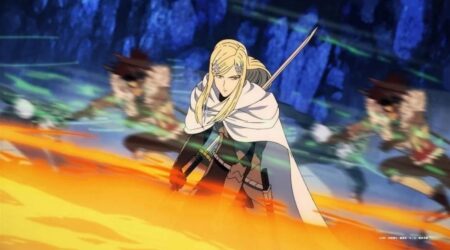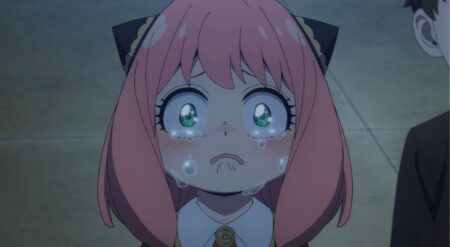When Star Wars: Visions premiered back in 2021, “The Duel” was its statement piece, a visual mic-drop that introduced the Ronin and announced that this anthology was unafraid to bend canon in the service of style. It was Kurosawa: a samurai nightmare filtered through monochrome ink and crackling saber light. “The Duel: Payback,” animated by Kamikaze Douga in partnership with ANIMA, returns to that same black-and-white battlefield with a promise of expansion. What it delivers instead is more of a remix than a revelation in Visions Volume 3.
The short picks up in the aftermath of the Ronin’s first encounter, re-establishing the drifting swordsman and the droid companion that made him an instant icon. Everything looks as painterly and textured as before, every line etched like charcoal on parchment. But the sense of mystery that defined the original is gone. We know the trick. The moment the Ronin ignites his crimson blade, the shock of seeing a “Sith” hero evaporates. “Payback” seems aware of this, yet never finds a new angle to replace it.
Instead, it leans hard on nostalgia, crowding its world with recognizable species and echoes of old eras. There are Ewoks, a Rodian bounty hunter, and even an Anzellan like Babu Frik. It’s all meant to remind you of the galaxy’s breadth, but it ends up narrowing the story’s focus.
The Duel: Payback is spectacularly choreographed.

Narratively, it’s straightforward: the Ronin tracks another Sith now moonlighting as a bodyguard for a gambling den, a place soaked in greed and vice, far removed from the discipline of the old Jedi or Sith orders. What begins as a confrontation between outlaws turns inward when the Ronin becomes haunted by a literal ghost of a Jedi from his past. It’s a setup ripe for reflection, but the story never slows down long enough to earn it.
The duels themselves are spectacularly choreographed. Kamikaze Douga hasn’t lost its flair for weighty, cinematic action; every strike feels deliberate, every cut purposeful. But as sharp as the choreography is, the confrontation lacks the philosophical tension that once made the Ronin compelling.
The original Duel left us asking what it meant for a former Sith to live by a samurai code—what redemption could look like in a world built on constant war. “The Duel: Payback” answers only in repetition: he’s still fighting, still atoning, still haunted. It’s less a story than an echo.
The Dule: Payback hints at the Ronin’s backstory.
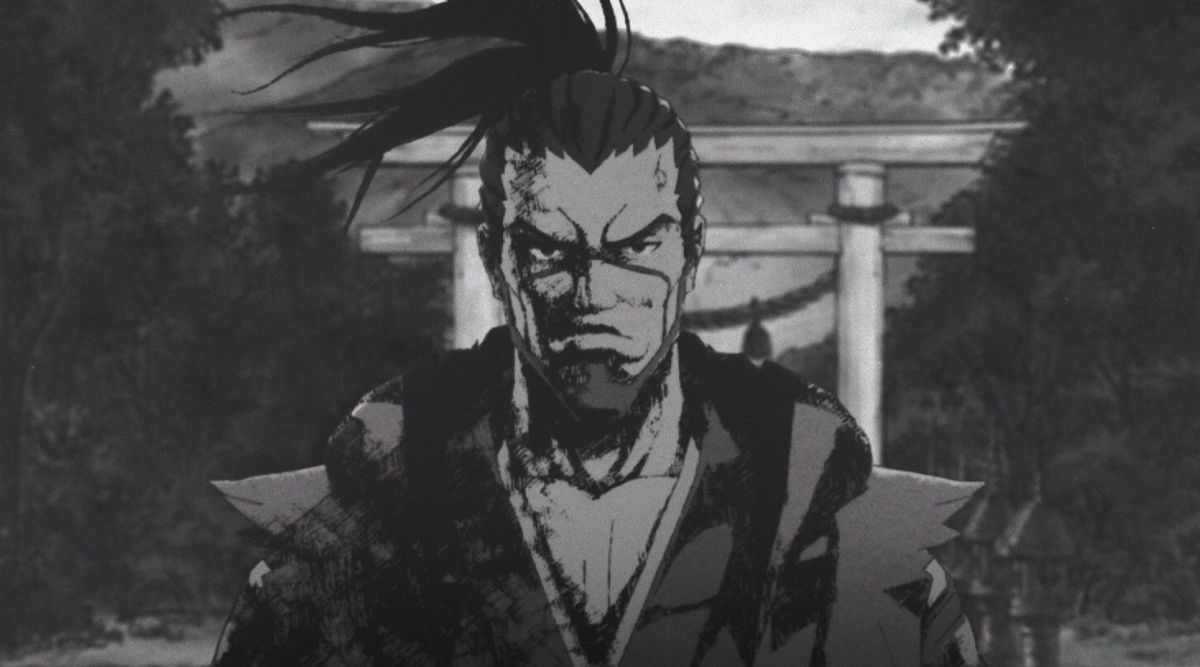
Visually, though, it’s undeniable. The blend of 2D ink washes and 3D staging remains one of the most distinct aesthetics in modern Star Wars animation. The snow, the smoke, the clashing sabers all have the tactile density of a woodblock print brought to life.
Where “The Duel: Payback” differs is in its occasional bursts of color: small glimmers of red, gold, and blood orange that punctuate the grayscale world like memories breaking through repression. Those moments hint at what the short could have been, a meditation on guilt and remembrance through color theory, but they’re fleeting.
Tonally, “The Duel: Payback” also shifts toward action over atmosphere. The first short thrived on silence and suggestion; “Payback” leans on momentum. It’s faster, louder, and more expository. We get hints of a backstory for the Ronin’s pursuer and teases of the wider world beyond his wanderings, but none of it feels as mythic as the mystery that once surrounded him. It’s not that the Ronin shouldn’t evolve; he should, but that his evolution here feels more mechanical than spiritual.
Was a sequel to The Duel strictly necessary?

There’s also a question of necessity. Of all the Visions shorts to receive continuations, “The Duel” already enjoyed an expanded novel (Ronin, by Emma Mieko Candon) that filled in much of its subtext. That book’s surreal, introspective tone captured the contradictions of its hero far more effectively than Payback manages in fifteen minutes. Watching this sequel, it’s hard not to wonder whether the Ronin’s story was already complete.
Still, “Payback” isn’t without grace. Its final act, set within the ruins of an ancient temple, slows the chaos just long enough for the Ronin and the fallen Jedi to confront each other, not just with sabers, but with words. Their debate about the Force aims for the same philosophical weight as their duel, yet it never quite lands. The dialogue gestures toward meaning—questions of balance, atonement, and what separates faith from fanaticism—but the short doesn’t give those ideas room to breathe.
The twist of the Ronin and another Sith uniting against the fallen Jedi should feel like a profound inversion of Star Wars morality. Instead, it plays as a cool image detached from consequence. There’s no reflection, only reaction. What might have been a meditation on ideology becomes another skirmish in stylish black and white.
The Duel: Payback is more like a coda than a continuation.
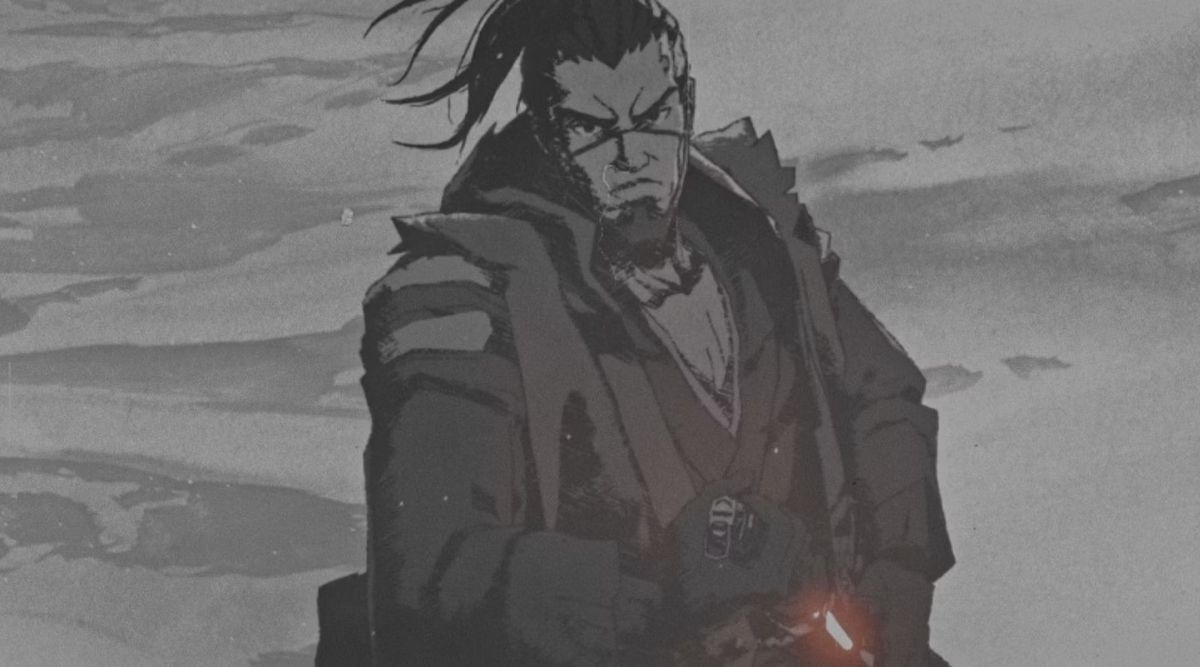
That’s the irony of “The Duel: Payback.” It has the form of a myth without the soul of one. The craftsmanship is undeniable: Kamikaze Douga’s animation remains stunning, but the story mistakes familiarity for meaning. In trying to recapture the Ronin’s mystique, it forgets the restraint that made him powerful in the first place.
Ultimately, “The Duel: Payback” feels less like a continuation and more like a coda: a beautiful encore to a song that didn’t need one. It’s a reminder of how potent Kamikaze Douga’s visual language still is, and how easily that language can outshine the words it supports. As the opening chapter of Visions Volume 3, it’s a striking return, but not a bold one. The Ronin remains a fascinating relic of what Visions once promised: a galaxy rewritten in ink and myth. But four years later, even legends risk repetition.
Star Wars: Visions Volume 3 is streaming now on Disney+.
Previous Episode | Next Episode
Star Wars: Visions Volume 1 | Star Wars: Visions Volume 2 | Star Wars: Visions Volume 3
Star Wars: Visions Volume 3 Episode 1 — The Duel: Payback
-
Rating - 7/107/10
TL;DR
The Duel: Payback remains a fascinating relic of what Visions once promised: a galaxy rewritten in ink and myth. But four years later, even legends risk repetition.



